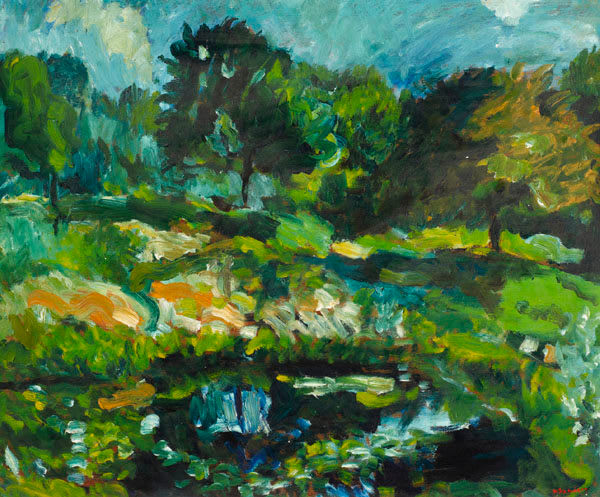Painter Henry Sanders (Helmuth Saloman) was born into a Jewish family in Dresden, Germany in 1918. Following Hitler's accession to the German Chancellorship in 1933, Sanders left for Holland and then England, where he studied at Hornsey College of Art from 1935–39. During the Second World War, Sanders was interned as an ‘enemy alien’ in a commonweath camp in Canada, where he drew prodigiously. Afterwards, he returned to England, and to Hornsey, studying under Russell Reave and John Moody.
Sanders went on to exhibit regularly at galleries in London including the Obelisk Gallery, the Redfern Gallery, and Roland Browse & Delbanco, as well as with the artists exhibiting society, The London Group, and in Newcastle-Upon-Tyne. In 1949–51 he served in the Studio Group Committee at Ben Uri Gallery, where he was a frequent exhibitor, participating annually in group exhibitions in 1950–59, 1965, 1967, 1969–75, and 1980 (twice), and posthumously, 1983, 1985, 2011 and 2018, as well as solo exhibitions in 1954, 1957, 1959, a joint exhibition with Grete Marks in 1970, and a joint memorial exhibition with Jack Bilbo and Lottie Reizenstein in 1983. As well as a painter of landscapes, nudes and animal motifs, he was also a lithographer and lino-cutter. In a review of his 1954 exhibition at Ben Uri Gallery, the Jewish Quarterly critic Michael Bullock praised the artist's work for a quality of his 'expressiveness', concluding 'Whatever Sanders produces is invested with an irrepressible vitality [...] Sanders never ceases to scan the outer world with an unfailing eye for the vitally alive and he possesses the capacity to portray living things in all their concrete immediacy [...] The refreshing directness of Sanders work is something to be grateful for' (Jewish Quarterly, Vol. 2, no. 2, Autumn 1954). Henry Sanders died in London, England in 1982. In the UK his work is held in the Ben Uri Collection.


